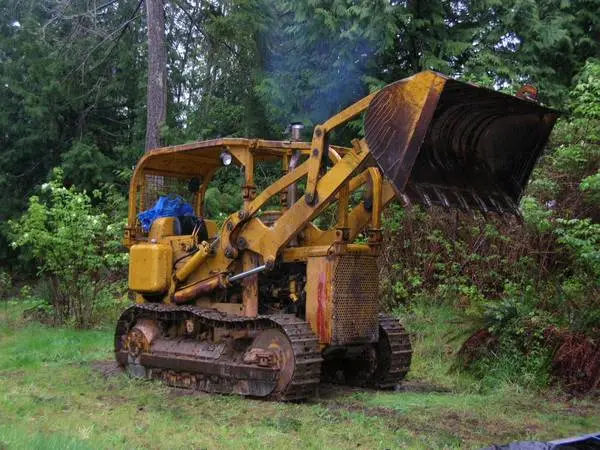Reply to Goldigger:
Thanks for everyone's advice - will not start it & remove engine as suggested, attached is picture running with the issue[attachment=27359]Cat.jpeg[/attachment]

I always thought that model was nice to look at,that picture brings back memories to me of my late father who was a top notch wheeler dealer he imported loads of the predecessor of that tractor into the UK which were all pony start we used to convert them to direct start and sell them on that involved having to remove the engine as the ring gear had to be changed,the procedure for removing the engine was,belly pans off,raise the loader frame up so the bell housing will clear the hard bar,raise the bucket up full,and secure it with two 3" heavy angle iron cut to the right length,fan guard off,radiator and housing off,there are two oil lines attached to the oil cooler on the side of the engine,remove the clip retaining bolts and press the two lines down,(they are push fit up into the adapters with o'rings),remove all of the air cleaner assembly including the elbow attached to the head as it will break easily if it gets a knock,fuel line.oil pressure line wiring,2 front support bolts and now the easy bit remove all the bolts from the torque housing to the bell housing,the designer was a sadist,look on top of the cylinder head front and back,you will see two 3/4 NC bolt holes to take the lifting eyes,we used a spreader bar and two small shackles,to attach it to the eyes,I had the lifting hole to attach the hoist exactly in the right place to lift the engine at the same angle so when putting it back the slip ring seals on the torque would not get damaged,looks by the picture that the engine may be smoking for a while,the exhaust is extended and looking the wrong way,it should look at the tilt link on the right,how did the gas get in the engine?.
Happy wrenching
AJ

